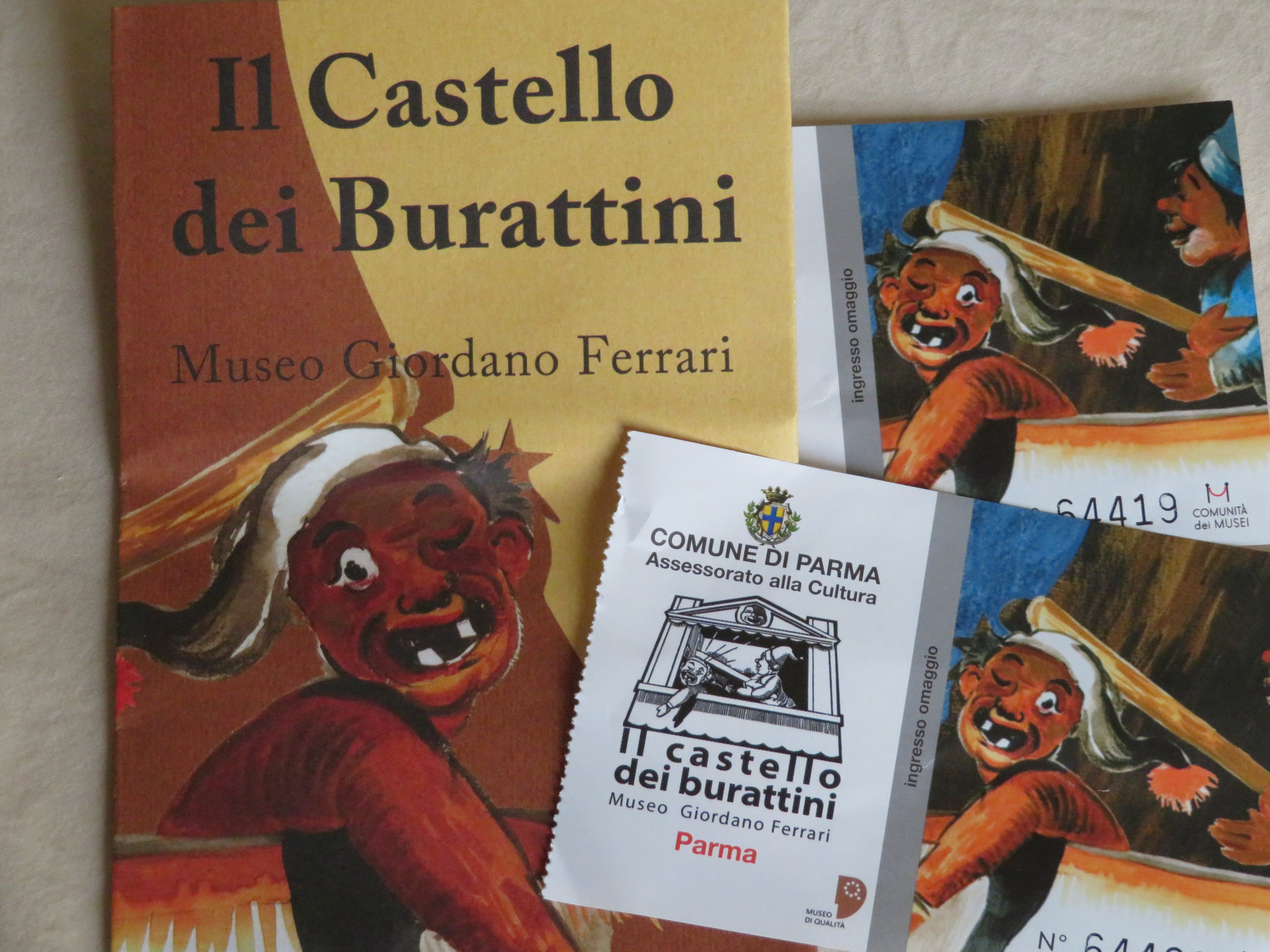Parma, Puppets and Piacenza
/If you read David’s recent BV, you’ll be happy to know that we’re rested and back in the groove. In case you haven’t guessed, we are, of course, actually a bit further along the path than my blog posts indicate. You gotta live it before you can write it. Here’s where we left off …
Welcome to Parma
It’s moving day once again and we’re moving from Pontremoli in Tuscany to Piacenza in a new region of Italy, Emilia-Romagna, about an hour northwest by train. Since we have to transfer trains in Parma, the region’s largest city, we thought it would be a great idea to do a little sightseeing. Parma is known for its architecture, music, art, prosciutto and cheese. We had limited time, so we chose a couple of things to see … the Duomo and Baptistry and the Giordono Ferrari Museum.
Finding a place to leave our packs while sightseeing is always an issue, but in Parma, it was easy.
One big issue about stopping in a city to sight-see is finding a place to stow our bags so we can walk around. I searched and searched the Internet and the only thing I found was that we could leave our bags free of charge at the Tourist Info office. The catch? They close for riposo and we couldn’t get our bags until after 4pm AND it was a mile from the train station. We figured we could deal with both those issues and headed out of train station to find luggage storage lockers just a few feet from the station. Easy peasy … and we were pack-less for the day.
We’re off to the puppet museum!
Because the Cathedral wasn’t likely to close and the museum might, we headed to the museum first. When I was researching Parma there were several sights to see, but the most interesting of all to me was the Giordano Ferrari Museum located in the Castello dei Burtinni … a puppet museum.
According to Britannica, ‘Puppet shows seem to have existed in almost all civilizations and in almost all periods. In Europe, written records of them go back to the 5th century BCE (e.g., the Symposium of the Greek historian Xenophon)…. It may certainly be said that puppet theatre has everywhere antedated written drama and, indeed, writing of any kind. It represents one of the most primitive instincts of the human race.’ I remembered seeing shadow puppets in the Cocos Keeling Islands and being intrigued.
The museum has hundreds of puppets most of which are hand carved and hand painted.
The museum, opened in 2002, is a testament to the vision of Giordano Ferrari, a member of a famous Italian puppeteering family, who wanted to memorialize the lives and works of puppet theater traditions in Italy. The museum contains the largest collection of puppets in Italy, most hand crafted/carved of wood and hand painted. Though the museum is not huge by any stretch of the imagination, wandering through it is a trip in itself. All sorts of characters from villains and devils, to princes and princesses and royalty, to knights and squires, to bawdy ladies, exotic natives and so much more.
A documentary film, narrated by Ernest Borgnine, provided an overview of Ferrari and his puppeteering family. It was a fascinating side trip into another world.
Giordano Ferrari and friends
Then on to the cathedral. Construction of the Parma Cathedral aka Duomo di Parma aka Cattedrale di Santa Maria Assunta, was begun in 1059 and consecrated in 1106. As with most great cathedrals of the day, additions and restorations have been made throughout the centuries.
Duomo di Parma
Two marble lions, sculpted by Giambono da Bissono in 1281, stand sentry at the entrance and are symbolic of this Cathedral.
Despite the number of churches and cathedrals we’ve visited along the way, there’s always a sense of awe when we enter each one and gaze at its enormity, richness and intricate splendor.
The pièce de résistance was the Assumption of Mary by Corregio in the Cathedral’s main cupola.
The Baptistery next door to the Duomo was undergoing repairs and we opted to give it a pass.
We lunched at the Cardinal Bar in the shadow of the Baptistery on the busy pedestrian mall of Via Duomo. I’ve discovered a popular Italian drink, Aperol Spritz. It’s a delightful, bright orange concoction of the Italian liqueur, Aperol, mixed with some Prosecco and a splash of soda, garnished with a slice of orange. It’s different and very, very refreshing.
We wandered the streets awhile, trying to get a feel for the city and find a gelateria (which we did).
All too soon it was time to recover our luggage and head to the train station for a trip to Piacenza, our newest ‘base camp’. Our guest house accommodations at Il Cortiletto were pleasant enough and close to the train station. Our young hostess, Fiammetta, was a gem. We shopped for a picnic dinner at a local supermarket, then spent the evening reading, writing, doing laundry and planning our route. Time to start walking.
Join us next time for a quick tour of Piacenza and our Via Francigena walks originating from the city.


















